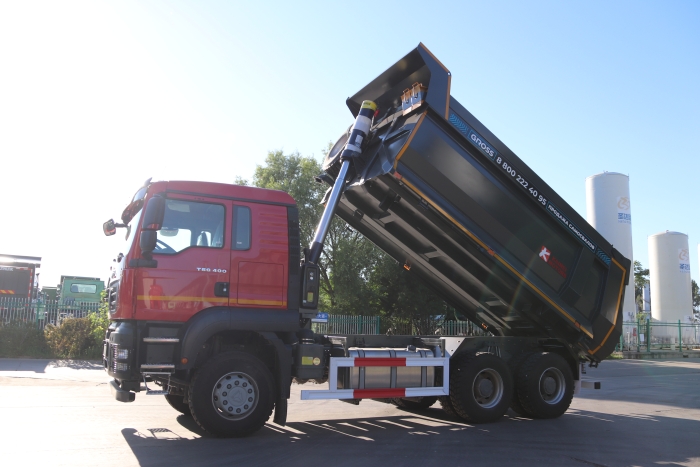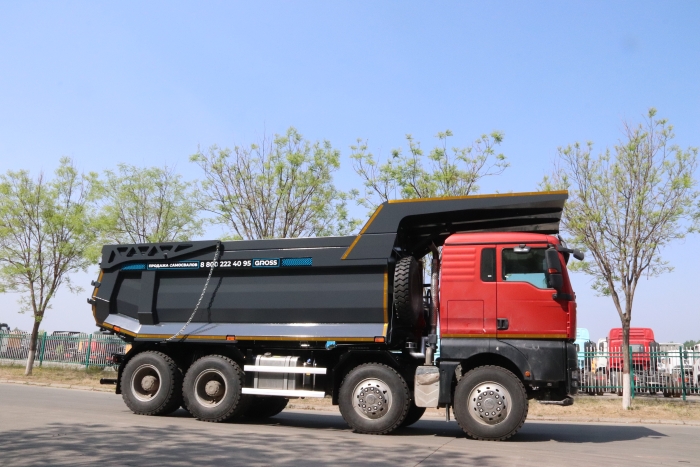- PRODUCTS
- SOLUTION
- SERVICE
- NEWS
- ABOUT US
Aluminum semi-trailers offer superior corrosion resistance but may have lower overall durability compared to steel trailers, which excel in strength and load capacity.
Aluminum alloys stand out for their lightweight nature, boasting a density approximately one-third that of steel, which typically ranges around 2.7 g/cm³. This significant weight reduction can lead to better fuel efficiency in vehicles and ease of handling in various applications. Moreover, they exhibit excellent corrosion resistance, especially when treated with protective coatings, making them ideal for use in environments prone to corrosive elements. In terms of strength, while pure aluminum possesses relatively low yield strength (30 MPa), its alloys can reach strengths comparable to those of some steels, with specific high-strength alloys achieving yield strengths up to 600 MPa. This makes them versatile for various engineering applications where both weight and strength are critical factors.

Steel, known for its heaviness and durability, serves as a benchmark in construction and manufacturing industries. Its density lies around 7.85 g/cm³, which contributes to its robustness and ability to withstand high stress and strain. Steel's durability is one of its standout features, with certain alloys offering extended lifespans due to their resistance to wear, tear, and environmental conditions. From a cost perspective, steel generally presents a more economical option compared to aluminum alloys, with prices fluctuating based on alloy composition and market demand. The cost-effectiveness of steel makes it a preferred choice for large-scale construction projects and applications where material costs significantly impact overall expenses.
Transitioning from the fundamental properties of aluminum alloys and steel, it's evident that each material brings unique advantages to the table. The choice between aluminum and steel ultimately depends on the specific requirements of the application, including weight considerations, environmental exposure, and budget constraints. Exploring the durability comparison, maintenance needs, and cost implications further provides insights into their suitability for semi-trailer applications, highlighting the importance of a thorough evaluation based on performance criteria and long-term benefits.
When comparing the corrosion resistance of aluminum alloys to traditional steel, aluminum alloys often take the lead due to their inherent resistance to rust and corrosion. This advantage stems from aluminum's ability to form a hard, protective oxide layer when exposed to the environment, effectively shielding the material from further degradation. In contrast, traditional steel, unless specifically treated or alloyed with corrosion-resistant elements like chromium, is more susceptible to rust when exposed to moisture and oxygen. For instance, untreated carbon steel can start to rust within a few days of exposure, while aluminum alloys can retain their integrity for years, even in harsh environments.
Aluminum's superior corrosion resistance makes it an excellent choice for applications where exposure to corrosive elements is a constant concern, such as in maritime or chemical processing environments. On the other hand, steel can be made more resistant to corrosion through galvanization or the application of protective coatings, but this adds to the overall cost and maintenance requirements.
Fatigue strength is a critical factor in the durability of materials, especially for those used in applications where cyclic loading and unloading are common, such as in the construction of semi-trailers. Aluminum alloys and steel exhibit different fatigue behaviors under prolonged use. Aluminum does not have a defined fatigue limit, meaning that it can fail under cyclic loading even at low stress levels if the number of cycles is high enough. Conversely, many steel grades have a fatigue limit, which is the stress level below which failure does not occur regardless of the number of cycles.
Despite aluminum's lack of a fatigue limit, its light weight allows for the design of structures that can withstand cyclic loads through careful engineering and design optimization. High-strength aluminum alloys can achieve fatigue strengths that are sufficient for many applications, though typically lower than those of steel for equivalent stress cycles. For example, a high-strength aluminum alloy might have a fatigue strength of 150 MPa at 10 million cycles, whereas a comparable steel alloy could exhibit a fatigue strength of over 300 MPa at the same number of cycles.
The choice between aluminum and steel for applications requiring high fatigue strength must consider these materials' inherent properties alongside design and operational requirements. While aluminum may require more sophisticated design approaches to meet fatigue strength demands, its lighter weight and better corrosion resistance offer compensating benefits.

The maintenance cycle and costs for aluminum alloy versus steel semi-trailers significantly differ, primarily due to their material properties and corrosion resistance. Aluminum alloys, with their superior corrosion resistance, generally require less frequent maintenance to protect against rust and corrosion. This advantage means that, over time, aluminum semi-trailers can be more cost-effective in terms of maintenance. For example, the maintenance cost for an aluminum semi-trailer might range from $500 to $1,000 annually, depending on usage and environmental conditions, compared to $1,000 to $2,000 for a steel semi-trailer under similar conditions.
Moreover, the lightweight nature of aluminum allows for potentially lower wear on components such as tires and brakes, further reducing maintenance costs. However, it is crucial to note that specific maintenance tasks may be more expensive for aluminum due to the need for specialized repair techniques, such as aluminum welding.
When it comes to repair difficulty and costs, aluminum alloys and steel again show distinct characteristics. Repairing aluminum requires specialized welding techniques, such as TIG (Tungsten Inert Gas) welding, which not all repair shops can perform. This specialization can lead to higher repair costs for aluminum semi-trailers, with estimates ranging significantly based on the extent of the damage. For minor repairs, costs might start at $100-$200, but for more extensive damage, they can easily exceed $1,000.
In contrast, steel, being a more commonly used and understood material in the automotive and trailer manufacturing industries, can be repaired in a wider range of facilities. This accessibility tends to keep repair costs lower for steel semi-trailers. However, if corrosion is a factor in the repair, costs can increase due to the need for additional treatment or replacement of rusted parts. Despite potentially lower individual repair costs, the more frequent need for corrosion-related maintenance on steel trailers can increase overall expenses.
Choosing between aluminum and steel semi-trailers involves balancing initial costs, maintenance requirements, and the potential need for repairs. While aluminum may offer lower long-term maintenance costs and higher resistance to corrosion, it can also present higher repair costs in case of damage. Conversely, steel may entail higher maintenance costs over its lifespan, particularly related to corrosion, but usually comes with lower repair costs due to the more widespread availability of repair facilities capable of handling steel.
The load capacity of aluminum alloy versus steel semi-trailers is a critical factor in determining their suitability for different types of cargo. Steel semi-trailers, due to their inherent strength and durability, typically offer a higher load capacity. They can handle up to 80,000 pounds under US federal regulations, which is the standard maximum for over-the-road semi-trailers. In contrast, aluminum semi-trailers, while significantly lighter, may have a slightly lower maximum load capacity due to the material's lower strength-to-weight ratio. However, the weight savings from using aluminum can allow for a larger payload since the trailer itself is lighter. For instance, an aluminum semi-trailer might enable a payload that is 1,000 to 2,000 pounds heavier than what a steel trailer of the same dimensions could carry, depending on the specific design and construction.

The suitability of aluminum and steel semi-trailers for different transportation needs varies based on several factors, including cargo type, distance, and operational environment. Aluminum semi-trailers are particularly advantageous for applications where total weight reduction is crucial, such as in fuel-sensitive operations or when transporting lightweight, high-volume commodities like electronics, furniture, or perishable goods. Their corrosion resistance also makes them ideal for use in corrosive environments, such as transporting chemicals or operating in coastal areas with salty air.
Steel semi-trailers, on the other hand, are the go-to choice for heavy-duty applications where maximum durability and strength are necessary. They excel in transporting heavy loads such as machinery, steel coils, and construction materials. Steel's higher load capacity and resistance to physical damage also make it suitable for rugged operations, including off-road and construction site deliveries.
Both materials have their place in the transportation industry, with the choice between aluminum and steel depending largely on the specific requirements of the cargo and the operating conditions. Aluminum offers weight savings and corrosion resistance, making it suitable for long-haul, fuel-efficient operations and sensitive cargoes. Steel provides unmatched durability and strength, ideal for heavy loads and harsh operating conditions.
Comparing the initial investment required for aluminum alloy versus steel semi-trailers reveals a clear distinction in purchase cost. Typically, aluminum semi-trailers are more expensive upfront, with prices often 20% to 30% higher than their steel counterparts. For instance, the cost of a new aluminum semi-trailer might range between $30,000 and $40,000, while a comparable steel trailer could be priced from $20,000 to $30,000. The higher cost of aluminum trailers is largely due to the price of aluminum material and the specialized manufacturing processes required to work with it.
Evaluating the long-term cost-effectiveness of aluminum versus steel semi-trailers involves considering durability, maintenance costs, and fuel efficiency.
· Durability: Aluminum semi-trailers, with their superior corrosion resistance, can offer longer service life in corrosive environments, potentially leading to lower replacement costs over time.
· Maintenance Costs: While aluminum trailers may have higher initial repair costs, their lower frequency of maintenance needs due to better corrosion resistance can result in lower overall maintenance costs over the life of the trailer.
· Fuel Efficiency: The lightweight nature of aluminum trailers allows for greater fuel efficiency, as they can carry the same load as steel trailers while weighing less. This weight saving translates to fuel cost savings, which can be significant over the trailer's lifetime. For example, a reduction in trailer weight by 1,000 pounds can result in fuel savings of up to 0.5%, which, depending on mileage, can amount to thousands of dollars annually.
Considering these factors, the total cost of ownership for an aluminum semi-trailer can be lower than that of a steel trailer, despite the higher initial purchase price. For long-haul operators who cover hundreds of thousands of miles, the fuel savings and reduced maintenance costs can offset the higher upfront cost of aluminum trailers within a few years.
In conclusion, while aluminum semi-trailers require a higher initial investment, their long-term cost-effectiveness is evident in applications where fuel efficiency, maintenance costs, and durability are critical considerations. The choice between aluminum and steel should, therefore, be informed by an analysis of both initial costs and projected long-term expenses.